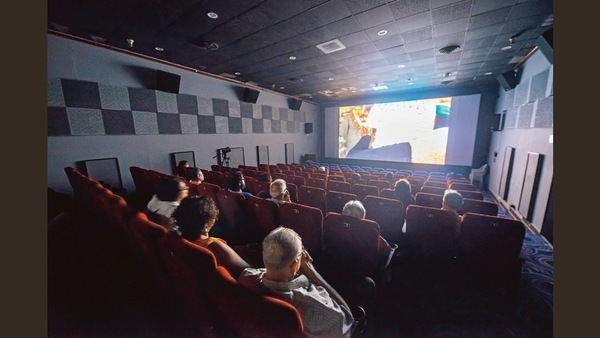South India and Hollywood, a cinematic romance

- Lata Jha
LiveMint
Last Updated: 05.02 AM, Mar 25, 2023
Large-scale Hollywood films such as Avatar- The Way of Water, Doctor Strange in the Multiverse of Madness and Top Gun: Maverick have seen over 50% of their overall box office revenues in India come from the south from specific dubbed versions. Trade experts say while there are generally more theatres well-equipped with the infrastructure to play Hollywood films in the south, the region has also extended its broader love for cinema that it watches in larger numbers than the north, to Hollywood.
According to a recent report by media consulting firm Ormax, Avatar thrived in south India thanks to the love for the fantasy genre there. The five states contributed 49% of its overall India box office.
“There is no doubt that the number one territory for Hollywood films in India is the south, followed by Mumbai. They are a more film-friendly audience and definitely more regular about going to cinemas, in general,” film producer, trade and exhibition expert Girish Johar said. That ticket prices in south India are monitored by the state government helps create a different, more enhanced culture of movie consumption, Johar added.
The focus on maintaining and upgrading single screen theatres helps take southern films wider in the south, according to trade experts. As a rule, American studios only take their films to DCI (digital cinema initiative)-compliant theatres in India, which are present in substantial numbers in south India. DCI is a joint venture of several film studios, including Metro-Goldwyn-Mayer, Paramount Pictures, Sony Pictures Entertainment, 20th Century Fox, Universal Studios, Walt Disney Co. and Warner Bros, to set up a common set of requirements that ensure a high and uniform standard of digital cinema viewing.
“DCI screen deployment is higher there and that stems from the fact that cinemas are still catering to the common man, necessitating and justifying consistent investment,” Bihar-based exhibitor Vishek Chauhan said. In the north, on the other hand, since the home industry, or local Hindi language cinema is not prospering, it doesn’t make sense for smaller theatres to bear the ₹30-40 lakh cost of a 2K projector, required to play Hollywood films. According to the Ormax report, the Telugu and Tamil audiences, unlike Hindi audiences, continue to be regular film viewers for a longer duration.
“These investments are a function of how well the theatre is doing, in the first place. Plus, southern cinemas are already playing films from all four languages, then they have the ancillary support of Hindi and Hollywood,” Chauhan said. In the north, on the other hand, cinemas are primarily dependent on original Hindi films or Hindi dubs of other language movies.
Therefore, those who had watched Avatar in 2009 would still be regular theatre-goers, keeping the franchise’s continuity intact. “In the Hindi film industry, the transition of audiences from regular to irregular and non-viewers (and vice versa) is a lot more fluid,” the report said. Further, the fantasy genre holds high appeal in the south, given the long and rich history of costume dramas starring the likes of NT Rama Rao and MG Ramachandran. In a sense, both Avatar and films belonging to MCU (Marvel Cinematic Universe) are visual spectacles relying on action and thrills.
